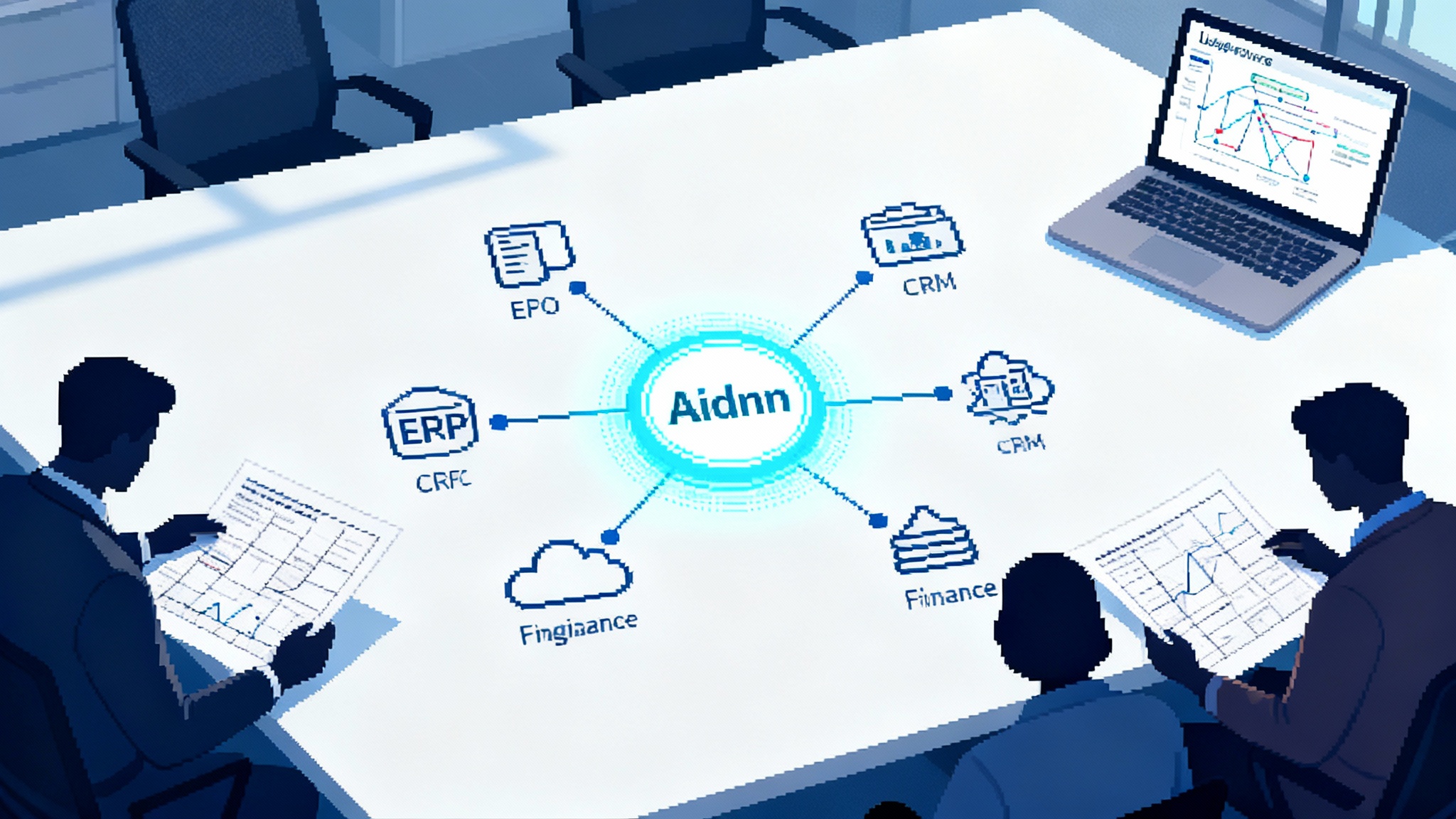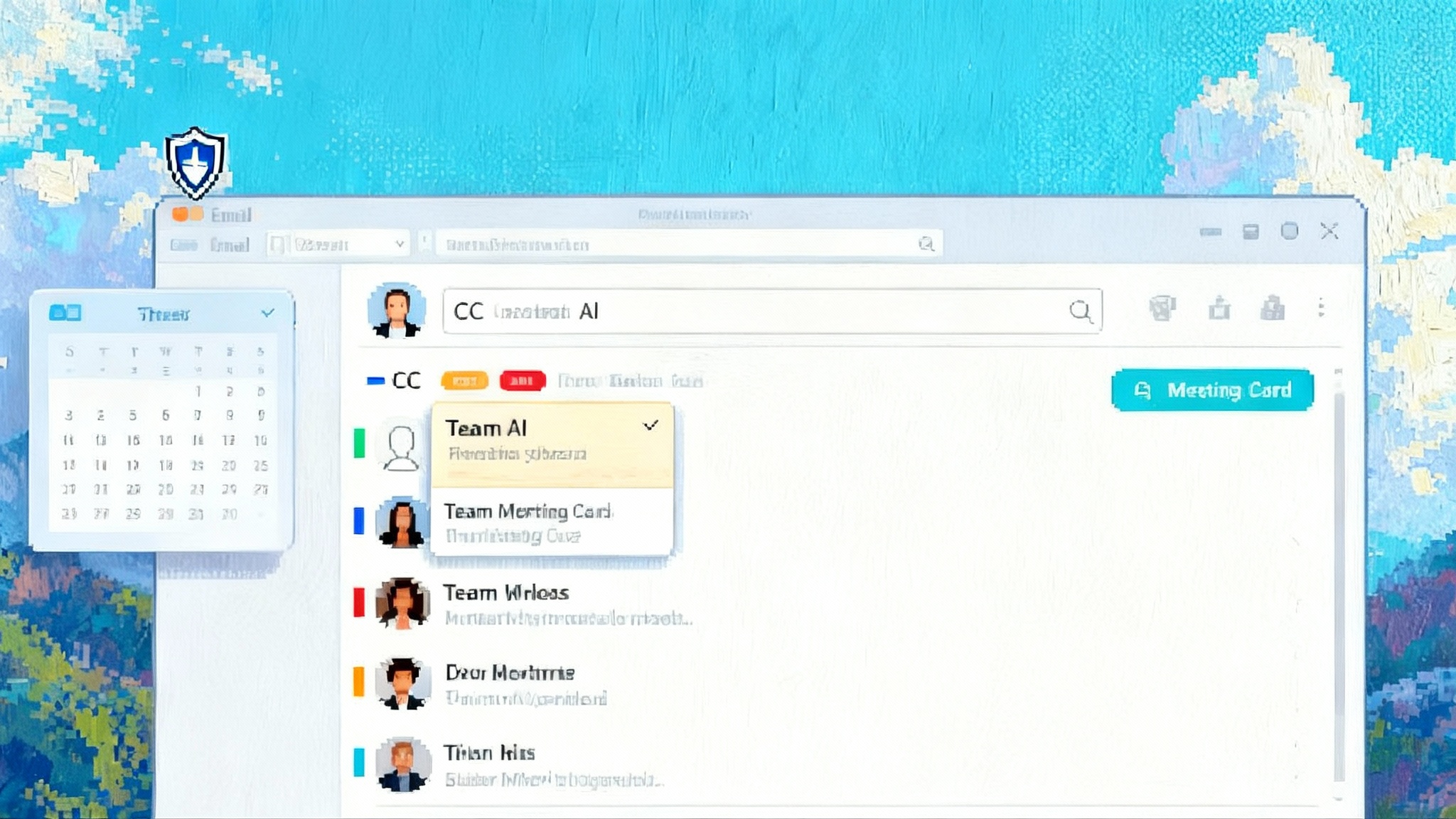Aidnn by Isotopes AI: From Queries to Decision Plans
Isotopes AI just launched Aidnn, a data ops native agent that finds, cleans, and joins messy enterprise data, then delivers traceable decision plans. Learn what is truly new, how it works, and how to pilot it well.

What just launched, and why it matters
In early September 2025, Isotopes AI introduced Aidnn, an enterprise agent that promises something many BI assistants do not attempt. It tackles the unglamorous work of data discovery, cleaning, and joining across ERP, CRM, finance, and cloud sources, then outputs a decision plan you can actually take to a budget meeting. The company came out of stealth with a seed round that signals real intent, not a demo reel. As reported at launch, Isotopes AI came out of stealth with 20 million. That scale of investment sets expectations for durability, governance, and measurable impact.
Most leaders do not want a tour of a dashboard. They want a defendable plan and the trace that explains how numbers were produced. Aidnn claims to deliver that plan, complete with assumptions, caveats, and next steps.
Aidnn in one sentence
Aidnn is a data ops native agent that discovers the right sources, profiles their quality, normalizes columns and units, infers joins, and produces a reproducible plan with tables, rationale, and a step by step trace.
What looks credibly new
The market is crowded with chat style analytics features, but three choices suggest Aidnn could be more than a veneer over SQL.
- Data ops first posture. Instead of assuming perfect schemas, the agent treats discovery, cleaning, and joining as first class actions. That is the work analysts and data engineers do before any chart makes sense.
- Transparent steps and memory. Rather than a one shot answer, the system shows what it did. You can inspect profiling summaries, transform steps, join choices, dropped rows, and anomalies with reasons.
- Pedigree at the data and AI boundary. The founding team’s background in large scale data platforms and applied model operations helps explain the focus on lineage, reliability, and joins rather than only chat UX polish.
Together, these moves aim to reduce the distance between messy systems of record and the decisions leaders need to make by the end of the week.
How it likely works under enterprise constraints
Consider a VP of Finance who asks for a Q4 forecast revision that accounts for market softness and a change in discount policy. An agent like Aidnn needs to perform several linked tasks under real governance.
1) Source discovery and access alignment
- Enumerate relevant systems, such as Salesforce opportunities, NetSuite invoices, Snowflake revenue facts, and a contracts repository.
- Map the request to an access plan and check entitlements. The agent should never broaden a user’s privileges. When more data is needed, it should propose a request for a steward to approve.
2) Profiling and quality assessment
- Sample data and compute freshness, null rates, unit consistency, and distribution drift compared to the last cycle.
- Flag misaligned currencies, duplicate customers across CRM and ERP, and missing close dates.
3) Normalization and semantic stitching
- Harmonize namespaces, field names, and units. Derive standard keys when clean keys are missing, with confidence scores.
- Label measures and dimensions with business semantics like MRR, churn, and channel so the output aligns with planning templates.
4) Join inference with explainability
- Propose join graphs with link strength. Explain why a CRM account maps to a billing entity in ERP, how many conflicts exist, and how they were resolved or quarantined.
5) Scenario logic and assumptions
- Write down explicit planning assumptions, such as a two point increase in discounts for deals under 25k ARR, or a six week sales cycle extension for enterprise in Q4.
- Propagate those assumptions across revenue recognition timing to show both cash impact and GAAP impact.
6) Output with a trace you can audit
- Produce a workbook or doc that contains the tables, charts, and a step by step trace. Highlight anomalies, low confidence joins, and required approvals before any sync to downstream systems is allowed.
From ad hoc questions to decision ready plans
Here are four common moves where an agent like Aidnn could compress time and improve trust.
- Revenue forecast adjustments. Pull weighted pipeline by segment, reconcile with bookings and billings, normalize for discount policy changes, and present a revised forecast with a written rationale.
- Supply and inventory planning. Join ERP supply commits with sales plans, project stockouts by region, and produce a purchase plan with supplier risk notes and a board ready appendix.
- Pricing and packaging experiments. Stitch deal size, win rate, and churn by package, model two pricing experiments, and quantify near term bookings versus long term retention tradeoffs.
- Headcount planning. Map quote to cash cycle time to required AE and SE coverage, factor seasonality, and recommend hiring by quarter with cash impact.
In each case, the useful artifact is a versioned plan with a readable trace, not a chat transcript.
How Aidnn differs from BI assistants you already know
Most BI assistants operate on top of a governed semantic layer. They are helpful for metric lookup and chart explanation. The hardest work still happens earlier. You still need to land new data, tidy columns, make joins hold across systems, and reconcile definitions that finance and sales created years apart. Aidnn tries to meet users upstream in that messy zone and then draft planning documents that can survive scrutiny.
This is consistent with a broader market shift that prioritizes outcomes over dashboards. If you follow the move from dashboards to autonomous actors, the pattern echoes the shift from dashboards to doers we have covered elsewhere.
What proof points enterprises should demand next
If you pilot Aidnn, or any agent that claims to deliver planning grade outputs, insist on proof in four areas. These are the rubrics that separate a compelling demo from a system you can trust.
1) Governance you can audit
- Access boundaries. Enforce least privilege by default and show evidence. The agent must never escalate rights on its own. Every new entitlement should go through a steward or approval queue with a durable record.
- Data privacy. Demonstrate behavior on PII, PCI, and HR data with clear masking, minimization, and redaction. Require a data processing register that maps processing activities to purpose, retention, and legal basis.
- Tamper evident logs. You need append only audit logs with cryptographic integrity or comparable controls your security team accepts.
2) End to end lineage you can show to an auditor
- Column and table level lineage. Demand a worked example where the agent traces a number in a plan back to the exact source tables and fields, and shows the transforms.
- Open standards. Prefer systems that emit or ingest lineage in an open format so you are not stuck in a closed viewer. One widely adopted option is the OpenLineage standard.
3) Evaluation harnesses that test the right things
- Data integration correctness. Build task suites that score schema matching, unit normalization, and join accuracy on gold labeled datasets. Do not only measure chat accuracy.
- Reasoning trace quality. Evaluate whether the agent states assumptions, cites anomalies, and quantifies confidence. Penalize silent failure more than noisy caution.
- Hallucination control and fallback. Create tests where required data is missing. The expected behavior is a blocked plan with a data request, not a made up number.
- Plan usefulness. Score outputs on decision utility. Did the plan change an allocation, a purchase order, or a hiring plan, and was that change correct in hindsight.
4) Safe autonomy gates
- Dry runs first. The agent should produce a staged plan, then wait for a human sign off before syncing to systems like ERP or planning tools.
- Policy checks. Enforce hard gates for spend thresholds, PII access, and separation of duties. Every gate should be testable in CI so you can prove controls work before production.
- Rollback and blast radius. Any sync action must have a reversal plan and a limit on scope, such as a single business unit or a time window.
For teams building the plumbing that makes these checks fast and visible, our coverage on how to turn shadow AI into a productivity engine offers practical patterns for observability and guardrails.
A pragmatic 45 to 60 day pilot plan
You can validate an agent like Aidnn without boiling the ocean. The key is to define explicit artifacts, controls, and pass fail thresholds from day one.
Week 1. Select two decision centric use cases that cut across at least three systems, such as revising the Q4 forecast and reconciling inventory reserves. Write down the artifacts you expect, such as a workbook with four tables and two scenarios, plus named approvers.
Weeks 2 to 3. Connect read only data, define access boundaries, and set up lineage capture. Lock in the evaluation harness and agree on thresholds for join accuracy, trace completeness, and reviewer trust.
Weeks 4 to 5. Execute plans weekly. Require the agent to show its trace and flag low confidence joins. Measure cycle time, number of escalations, and defects found by reviewers. Record how often assumptions were revised.
Week 6. Decide on go forward scope. If results clear the bar, expand to one additional system and grant carefully scoped write access behind autonomy gates.
Metrics that matter
Track a small set of metrics that capture both speed and safety.
- Cycle time to a board ready plan.
- Join accuracy and reconciliation defect rate.
- Reviewer trust score on trace completeness.
- Number of sources successfully joined, with confidence distribution across links.
- Reduction in manual spreadsheet steps and copy paste operations.
- Frequency of blocked plans with clear data requests rather than silent gaps.
What could go wrong, and how to mitigate it
- Overconfident joins. An agent that stitches customers across CRM and ERP can silently mislink or drop revenue. Mitigation: require confidence scores, quarantine logic, and an outlier review queue.
- Scope creep in access. If the agent chases data outside the approved boundary, you create new shadow IT. Mitigation: entitlements must be explicit and logged, and the agent should propose data requests rather than expanding access itself.
- Hallucinated comfort. A smooth narrative can mask shaky data. Mitigation: insist on explicit assumptions, visible anomalies, and a step level trace plus lineage that a different tool can verify.
- Vendor lock in. A closed lineage format or orchestration layer can trap you. Mitigation: prefer open standards for lineage and traces, and insist on exportable logs.
Competitive context without the hype
Every analytics platform is adding a chat assistant. A few startups promise a single chat for the business. The difference to look for is whether the system can work upstream of your semantic layer and still leave you with artifacts you can audit. That is the bar any competitor must clear to claim decision readiness. The broader agent stack is also shifting toward production grade patterns, which makes the production shift for agents an important backdrop for buyers.
What this means for data, finance, and operations leaders
- Data leaders. Your mandate shifts from dashboard delivery to decision enablement. Agents like Aidnn make lineage, governance, and evaluation harnesses central. Consider standing up a small autonomy council that includes data, security, and finance to approve gates and reviews.
- Finance leaders. You get faster plans, but only if you accept the discipline of explicit assumptions and structured approvals. Be ready to show your work to auditors and to the board.
- Operations leaders. You can fold agent outputs into S and OP and supplier workflows, but insist on narrow write access and rollback plans before any sync is allowed.
The road ahead
What would signal real traction over the next two quarters?
- Demonstrated lineage at column level across at least three core systems, with exports your data catalog can ingest.
- Evaluation reports that show improvement in join accuracy and plan quality over time, not just static benchmarks.
- Stable SLOs for plan delivery time, data freshness, and trace completeness.
- Safety incidents handled with transparent postmortems and updated gates.
If Isotopes AI delivers on these proof points, Aidnn could mark a practical turn from ad hoc questions to decision grade planning at enterprise scale.
What to test next
- Can the agent explain why a join decision was made in a way a finance reviewer can understand in five minutes.
- Will the system quarantine low confidence records and propose specific data hygiene actions, rather than quietly dropping rows.
- Does the plan include explicit assumptions you can flip and rerun, such as discount rate changes or cycle time shifts.
- Can the lineage view export to an open format and be verified in a separate catalog that your auditors already trust.
Aidnn arrives at a moment when many teams are done with conversational thrills and are asking for outcomes they can audit. The narrative is promising. The next few large pilots will tell us if the shape holds under real constraints and real data.
Notes for builders and buyers
If you are building on an agent stack, invest early in task evaluation, lineage capture, and the policy gates that make autonomy safe. The most successful vendor relationships we see start with non negotiable controls and clear contract tests for safety. The playbook above will help you compare products on what matters rather than on a clever chat demo. It also pairs well with patterns from adjacent launches that move the market in the same direction, including the documented shift from dashboards to doers and the maturing frameworks behind the production shift for agents.
The bottom line is simple. If Aidnn can consistently turn messy operational data into a traceable plan that changes real decisions, it will earn a seat in finance and operations workflows. That is the standard worth holding to, and the test any enterprise agent should be eager to run.








